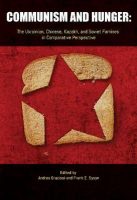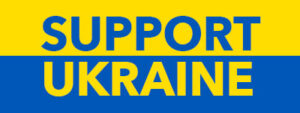In this edition of Knyzhka Corner: Communism and Hunger – The Ukrainian, Chinese, Kazakh, and Soviet Famines in Comparative Perspective edited by Andrea Graziosi and Frank E. Sysyn.
Communism and Hunger is a collection of scholarly articles examining the similarities and differences of the pan-Soviet famine of 1931-1933, the Ukrainian Holodomor, the Kazakh great hunger, and the famine in China in 1958-1962. The articles were written by scholars who presented their papers at a 2014 conference organized by the Holodomor Research and Education Consortium. “Whatever the economic motivations, the famines were also political events requiring political analysis of their causes and courses.” (p. vii)
The first three articles in this collection examine the specific causes, events and results of the famines. Nicholas Werth examines the “man made” famines in the USSR from 1928-1933, which killed between 6.5 to 7 million people – 4.2 million in Ukraine and the Kuban, 1.5 million in Kazakhstan and more than a million throughout the rest of the Soviet Union. Stalin considered peasant resistance to his economic policies a war on the Soviet Union.
Werth describes the forced collectivization in Ukraine in brutal terms, “The total confiscation of land and livestock from village communities, the harsh restriction of ownership of domestic animals, and the peasants’ loss of control over the distribution of the harvest,” (p. 11) resulted in wholesale starvation. At the height of the Holodomor, between January and July 1933, “between 15,000 and 20,000 people died every day, in silence and total abandonment.” (p. 12) Sarah Cameron’s article on the Kazakh Famine of 1930-33 examines Stalin’s efforts to collectivize the nomadic population which resulted in whole-scale starvation. As archival information has become more available, the research on this horrific event has increased. The third article by Zhou Xun examines the Great Famine of 1958-62 in China, which claimed millions of lives as a result of Mao Zedong’s effort to make China an industrial communist utopia.
The subsequent three articles are comparative studies of the use of hunger as a weapon in communist regimes in the 20th century. The similarities are striking: political reasons for man-made famines, official denials to the world about the famines while they were occurring, and striking consequences for those impacted by the famines. All the scholars are united in calling for more research on these important historical events.
The articles in this book relied on recent increased access to archives and the efforts of the international scholarly community to release information about the use of hunger as a political and economic tool by communist governments in the 20th century. These governments believed that by creating politically-motivated famines they could manipulate the populations under their control. The statistics of the various famines have been hotly contested for their accuracy mostly because of political propaganda. The most shocking aspect of this collection of articles is t hat the world community allowed these famines to occur without intervention. Whole populations starved to death while the world community ignored their plight.
The individual articles in this scholarly book about how hunger was used as an economic and political tool by communist governments are very enlightening. There are extensive and detailed footnotes which will definitely be useful to scholars pursuing further research on these topics. While Ukrainian Holodomor was not the only focus of this text, readers will learn a great deal about the horrific events in their historical context. Communism and Hunger is definitely meant for scholars of world history; however, all readers interested in the history of the Ukrainian Holodomor will definitely enjoy this book.
The book was edited by Andrea Graziosi, President of the Italian National Agency for the Evaluation of Universities and Research, and a professor of history at the Universita di Napoli Federico II, and Frank E. Sysyn, Director of the Peter Jacyk Center for Ukrainian Historical Research, Canadian Institute of Ukrainian Studies, and Professor in the Department of History and Classics at the University of Alberta.
Communism and Hunger is available at Canadian Institute of Ukrainian Studies Press and Amazon.
–Reviewed by Myra Junyk


